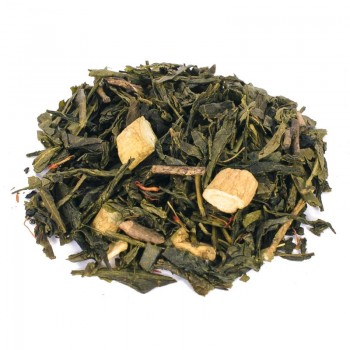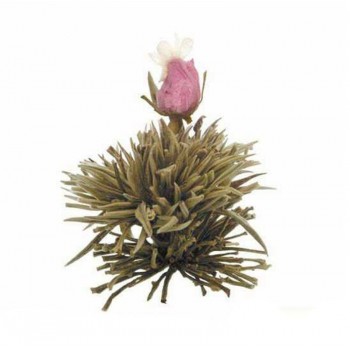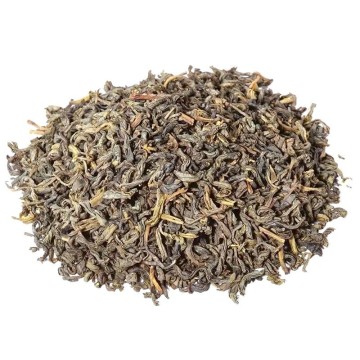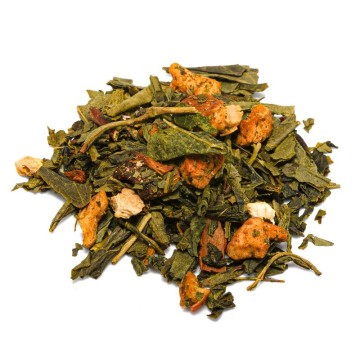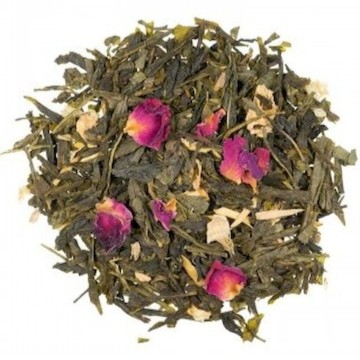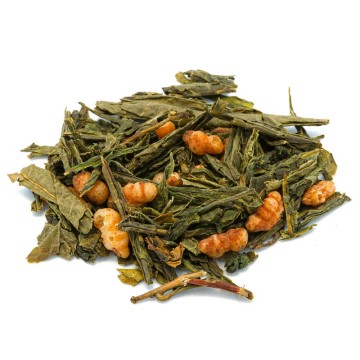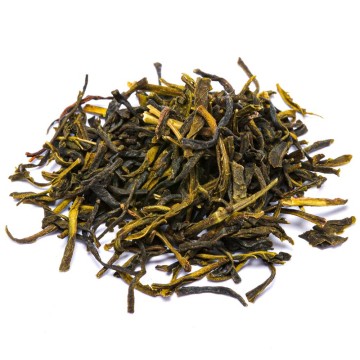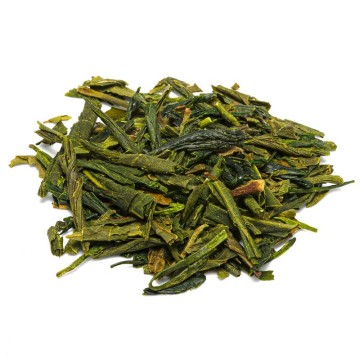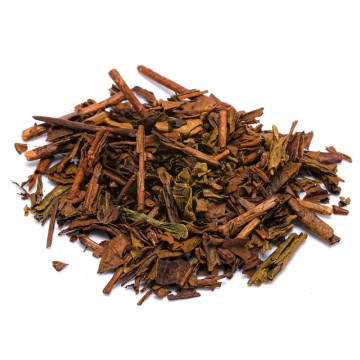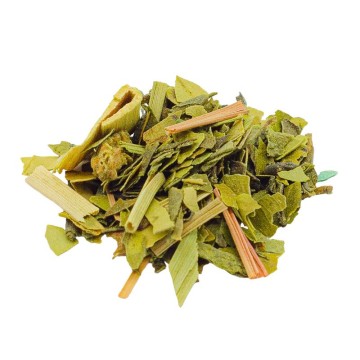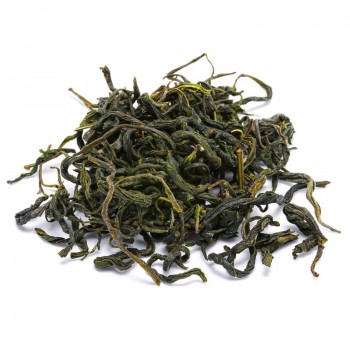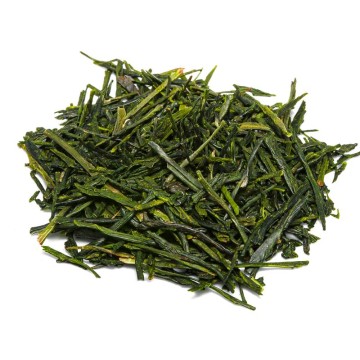This fermented tea uses green tea leaves, usually created by combining cultures of bacteria and yeast with tea leaves and sugar. The mixture is fermented to produce kombucha, also known as mushroom tea, or Manchurian tea.
In this case the Sencha is enriched with Kombucha powder (maltodextrin, green tea, herbal blend, cane sugar, water, kombucha cultures ). The fermentation process produces high levels of vitamins and minerals, which is also enhanced by the other ingredients such as mallow flowers.
Properties and benefits
Kombucha tea is known as a natural remedy and in the world of wellness drinks. The union of raw kombucha mushroom, used by the Chinese in traditional medicine, and green tea, is considered a healthy elixir for our body. The indications on the benefits of kombucha tea are mainly aimed at its content of healthy bacteria, useful for intestinal well-being, and for the immune system.
Kombucha is rich in vitamins and bacteria friendly to the immune system, and the combination with green tea also adds antioxidants, B vitamins and vitamin C, which help fight colds and flu. Surely this tea is known because it helps digestion, with its ability to improve the absorption of food, through the action of probiotics and substances in which this drink is rich. In fact, the by-products of the fermentation process include organic acids and an increase in the number of good bacteria and microorganisms.
Probiotics help the body break down foods, plus they promote purification, through the 'natural diuretic action. Kombucha can help slim down by eliminating waste and toxins. Kombucha made from green tea also makes available the health benefits of tea, which include support for weight loss and blood sugar control. Furthermore, the combination of sencha and kombucha appears to have beneficial antioxidant effects for the liver.
Drinking kombucha can also promote antioxidant activity which protects the digestive tract from attack by harmful bacteria and fungi. In this regard, in ancient times it was considered a natural antibiotic by folk medicine. One of the main substances produced during the fermentation of kombucha is acetic acid, which together with the tea polyphenols helps to eliminate microorganisms potentially harmful to inflammation (they prevent the proliferation of unwanted bacteria and yeasts, without eliminating beneficial probiotic bacteria and yeasts) .
The kombucha produced with tea leaves can also help protect the well-being of the heart, with an action that helps against the increase in bad LDL cholesterol. The fermentation process of kombucha tea makes it slightly effervescent, with a slightly sour taste.
Origins and History of cultivation
This fermented drink is produced using a symbiotic culture of bacteria and yeast, composed of many microbial agents. Such as the acetic acid bacterium and a yeast, Saccharomyces cerevisiae. This produces a kombucha tea that contains live bacteria, probiotics. The kombucha fermentation process can last several days (from 7 to 12), depending on the temperature and the bacterial strains used. During fermentation, the culture consumes all the sugar and converts it into acids.
Therefore, kombucha green tea has a low amount of sugar. Kombucha is used in many areas from China to Japan to the United States and Russia, for wellness and health treatments (in traditional medicine and as a natural remedy). The other item is Sencha green tea (usually Japanese, although there is Chinese Sencha tea). All teas come from the Camellia sinensis plant, native to Asia, particularly in the area between Tibet, the Chinese provinces of Yunnan, Guizhou, Hunan and Sichuan. The plant has spread over time throughout the Asian, Southeast Asian and Indian continents, and in Japan through Buddhist monks returning from China. However, it was only in the seventeenth century that the process of Sencha green tea began to spread.
The culture of ground Japanese tea welcomed the processing of the leaves with cooking, the Sencha which quickly took hold in Japan. Japanese Sencha tea is grown in full sun, and the leaves undergo a first harvest in spring and a second harvest, along with the more delicate buds. The tea from the first harvest in is called Shincha and is considered the finest of the Sencha.
Throughsteaming stops the oxidation process of the leaves, giving a different flavor from other types of tea. Green tea maintains the antioxidants of the plant and its nutritional principles. After cooking, the leaves are rolled up and shaped into a cylindrical shape, to then be dried. In its various qualities, Sencha is the most widespread in the Japanese tea industry, accounting for approximately 60-80% of the total production.
Plant and flowers
Camellia sinensis is the evergreen flowering plant from which tea is produced through leaves and buds. It belongs to the genus Camellia, of the Theaceae family. All teas derive from this species, even if the leaves processed differently can reach different levels of oxidation and provide green, white and black teas. There are two main varieties: the Chinese tea of Camellia sinensis var. sinensis, and Assam tea, Camellia sinensis var. assamica. Camellia grows as a shrub or small tree which is usually cut to less than 2 meters to facilitate hand-picking of the leaves. It shows a tap root, white-yellow flowers, light green leaves, with short white hairs on the underside.
The seeds can be pressed to obtain the tea oil. The fresh leaves and buds are harvested for tea production, but harvested at other stages are also present. The various ages of the leaves produce various qualities of tea, with a different chemical composition. Today the plant is cultivated all over the world in tropical and subtropical regions, on soils up to 1,500 meters (the plants grow more slowly in height and the leaves acquire more flavour).
Nutritional values of Sencha Kombucha Green Tea
Kombucha tea generally contains carbohydrates, sodium, sugar, is fat-free and low in calories. Most kombucha green teas contain acetic acid, lactic acid, and digestive bacteria. Since kombucha is made from tea leaves of the Camellia sinensis plant, it also contains high concentrations of the antioxidant known as EGCG, and catechin polyphenols (epigallocatechin-3-gallate (EGCG), epigallocatechin EGC, epicatechin EC).
This green tea makes available antioxidant biomolecules and substances such as the amino acids theanine and arginine, vitamins A, C, E and group B vitamins. It provides elements such as caffeic and chlorogenic acid, mineral salts (calcium, copper , iron, magnesium, phosphorus, potassium). It also contains methylxanthines such as caffeine, theobromine, theophylline.
How to prepare Sencha Kombucha Green Tea
The infusion is obtained by placing in a cup (250 ml), about 3-5 grams of the mixture of tea and kombucha. Water at a temperature of 80 °C. Leave to infuse for 2 to 3 minutes, before drinking the Sencha green tea infusion. Sencha Kombucha Green Tea: Side Effects and Contraindications: Green tea with kombucha is safe to consume, as long as you do not overdo it.
Too much kombucha tea can lead to high acid concentrations in the body, creating a condition of acidosis, with consequences such as an irregular heartbeat. It is therefore advisable not to drink kombucha tea for prolonged periods and in large quantities. Another possible effect of Sencha Kombucha green tea is that it can contribute to the consumption of excess calories.
While Kombucha helps the digestive system thanks to probiotics or beneficial bacteria, if consumed too much it can cause side effects of bloating and intestinal gas. The effects of tea consumption, on the other hand, have contraindications relating to caffeine and tannins: agitation, headache, nausea, heartburn. In the case of iron deficiency, it is good to pay attention since the catechins in green tea in high quantities can limit its absorption in the body. Caution is advised when taking kombucha green tea during pregnancy and breastfeeding.

![Green Tea Sencha Kombucha [Natura d'Oriente] Green Tea Sencha Kombucha [Natura d'Oriente]](https://www.naturadoriente.com/3380-large_default/-green-tea-sencha-kombucha-.jpg)
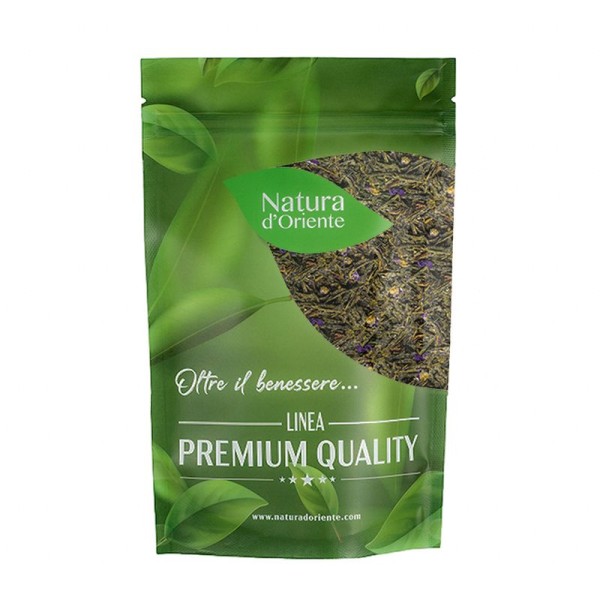


![Green Tea Sencha Kombucha [Natura d'Oriente] Green Tea Sencha Kombucha [Natura d'Oriente]](https://www.naturadoriente.com/3380-home_default/-green-tea-sencha-kombucha-.jpg)



 No reward points for this product.
No reward points for this product.
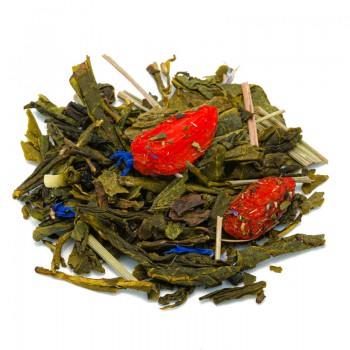
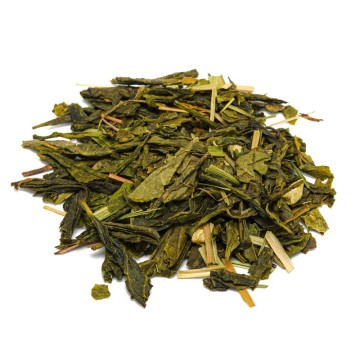
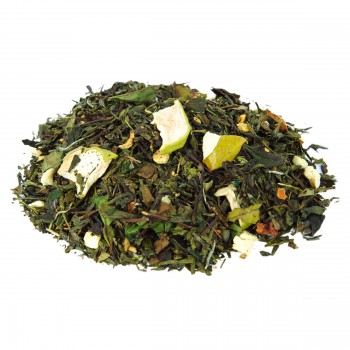
![Ginseng and ginger green tea [Natura d'Oriente]](https://www.naturadoriente.com/3367-home_default/Green-tea-ginseng-ginger.jpg)
